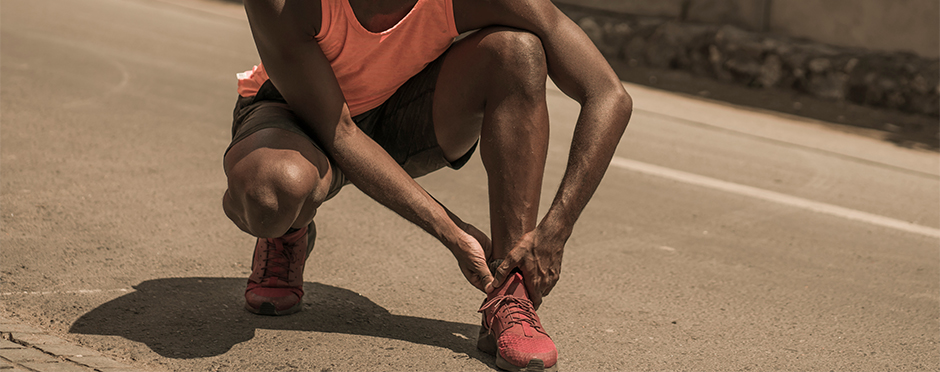
What Does It Really Mean When You’ve Rolled Your Ankle?
Leave a CommentHave you ever been walking, looking at the world around you, followed by a quick moment when you feel your foot catch the edge of the sidewalk and roll your ankle? It’s a pretty common injury and has the potential to cause some pain and swelling with varying degrees of injury. An inversion ankle sprain is the most common way to roll your ankle. This type of sprain involves inward movement of your foot, resulting in a sprain to the ligaments on the outside portion of your ankle.
Different degrees of injury can occur depending on how badly your ankle gets rolled. The most common injury is a sprain to the Anterior Talo-Fibular Ligament or ATFL. There are different degrees of injury, graded 1, 2 or 3. A grade 1 sprain means a mild sprain that involves slight stretching to the ligament’s fibers and can apply minor swelling and tenderness around the area. A grade 2 sprain means there is a partial tear in the ligament, meaning the ligament is not completely torn. There will be more significant swelling and pain around the area as you, move your ankle and you’ll likely limp when you walk. A grade 3 sprain is the most severe and occurs when the ligament completely tears. Significant swelling, bruising, and pain with walking and movement will occur. A grade 3 tear may require surgery to repair the damaged ligament. Grades 1 and 2 ligament sprains typically do well with conservative care, which includes ice, compression, elevation, bracing and physical therapy.
Other significant injuries can occur when you roll your ankle, including a muscle strain or avulsion fracture. A pair of muscles outside of your ankle called your peroneals can be strained when you roll your ankle. Similar to ligament sprains, strains are graded from 1 through 3, with 3 being the most severe. An avulsion fracture occurs when the ligament pulls on a small piece of bone where it attaches, resulting in a break. Medical imaging such as an X-ray or MRI is required to rule out a fracture or severe muscle or ligament tear.
Recovery may require a period of bracing or use of crutches to minimize the weight that you have to put through your injured leg. Physical therapy can be beneficial to help manage the initial pain and swelling, followed by progressive strengthening and balance training. If you’ve rolled your ankle and are unsure of what next steps you can take, call your local Athletico Physical Therapy clinic, request a Free Assessment and have one of our expert physical therapists guide your recovery.
*Per federal guidelines, beneficiaries of plans such as Medicare, Medicaid, Tricare, VHA and other federally funded plans are not eligible for free assessments.
The Athletico blog is an educational resource written by Athletico employees. Athletico bloggers are licensed professionals who abide by the code of ethics outlined by their respective professional associations. The content published in blog posts represents the opinion of the individual author based on their expertise and experience. The content provided in this blog is for informational purposes only, does not constitute medical advice and should not be relied on for making personal health decisions.
Sources:
1. Hertel J. Functional Anatomy, Pathomechanics, and Pathophysiology of Lateral Ankle Instability. J Athl Train. 2002 Dec;37(4):364-375. PMID: 12937557; PMCID: PMC164367.
